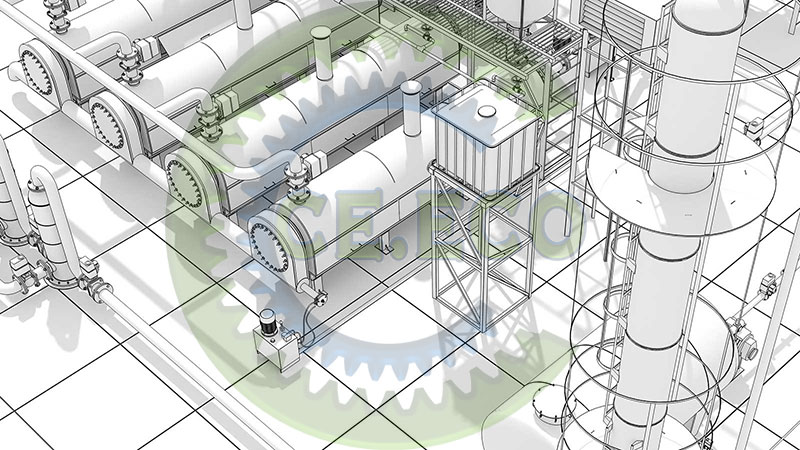The process we designed is completely modular. Based on the needs found at the customer site, we can choose to combine the gasification technology with the plasma one and also take advantage of the less performing biodigestion always treating the gases with technologies derived from the oil & gas field and taking advantage, wherever possible, of the controlled cavitation’s power; energy production can be obtained from time to time with endothermic engines, gas or steam turbines and, sometimes, with thermo-dynamic systems. The abduction systems are modulated by the extractive industry while the management of safety devices is also the result of experience gained in the oil & gas sector.
By way of example, each gasifier will be able to treat around 4.5 tons of matrices (up to 3 different matrices per 1.5 tons per hour) while each torch will be able to treat up to 3 tons per hour. There is no limit in the number of systems that can be placed in parallel: the heart of the system (gasification, plasma and biodigestion) will be sized and any required ancillary systems will be provided both at the input and output.
Obviously, as in any other industrial plant, the larger the installation, the more economies of scale can be developed. The larger the implant, the more the abduction systems, especially their starting energy consumption, can be spread and absorbed. The larger the energy efficiency, the greater the kWh fed into the grid.
Therefore, the maximum dimensions are dictated by the capacity of the national grid in the country where the client decides to position the plant or, if it points to other productions other than electricity, the quantities of matrices that can be supplied.
We think to an annual operating cycle of around 330 days. Every value we provide is to be considered conservative as are the values provided by our supplier partners.











